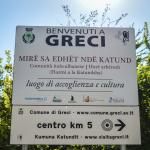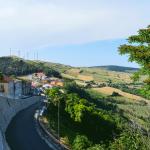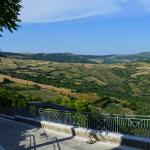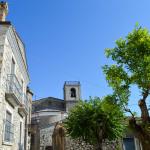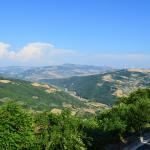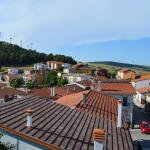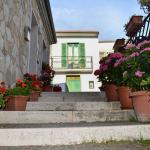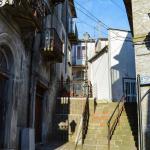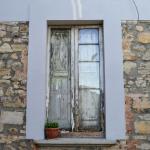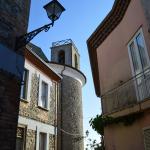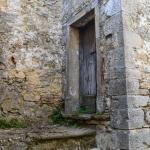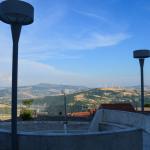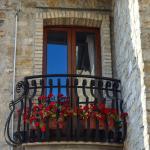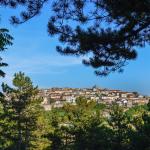The Municipality of Greci rises in the area of the Cervaro-Miscano Valley. It's a village with 630 inhabitants, located 821 metres above sea level, at 72 km from Avellino. The territory extends for 30.27 sq km and the adjoining municipalities are: Ariano Irpino, Castelfranco in Miscano, Faeto, Montaguto, Orsara di Puglia and Savignano Irpino. It is crossed by the Cervaro river.
The etymology of the name comes from the Latin Graeci, meaning "Greeks", referring to the Greek-Byzantine population from which the village originated. The inhabitants are called Grecesi and Saint Bartholomew the Apostle is their patron saint.
PLACES OF INTEREST
- Caccese Palace and Vedovato Museum - 19th century building, inside which there is the museum dedicated to Giuseppe Vedovato (1912-2012), president emeritus of the Council of Europe, born in Greci
- Lusi Palace - 16th-century building with internal courtyard, which houses the Palazzo Lusi Esposizione Archeologica Greci (PLEAG - Lusi Palace Archeological Exhibition Greci)
- Church of San Bartolomeo (Saint Bartholomew) - Dedicated to the patron saint, it's the Mother Church of Greci and dominates the highest point of the village
- Post office "Three Fountains" - Located along the Regio Tratturo (old transhumance route) Camporeale-Foggia, it is an imposing example of Renaissance rural architecture
- Mnemoteca - It houses the "Arbëreshë Culture and traditions" exhibition and the "Vedovato" and "De Martino" libraries
- "P. Leonardo De Martino" library - The municipal library takes its name from Father Leonardo De Martino: Italian-Albanian writer and poet, apostolic missionary in Albania, he dedicated his life to that land, where he founded the first Catholic schools. His collection of poems, entitled "The harp of an Italian-Albanian" is well known
- Lauda Palace - 18th-century structure, once belonging to the family of the same name
- De Maio Palace - Dating back to the 18th century, it belonged to the descendants of Michele De Maio
- Small lake in the hills "Luzza Acqua Fets"- Also called "Lago Iliade" it's beautiful natural lake located between the mounts Calvario and Cervo
- "Breggo" municipal villa - Located in the locality of the same name ("Breggo" is an arbëreshë term meaning "hill") it is known because it was the first Arbëreshë settlement, characterized by the survived kalive, ancient typical houses
EVENTS
- The Sacred Drama of Saint Bartholomew - The most important feast in the town, dedicated to the patron saint, on the 25th of August
- Caciocavallo festival - Food and wine event with the tasting of one of the tastiest and most representative products of the Irpinia area
- Corn cob Festival - Food and wine event, accompanied by good music, where you can find different dishes and typical products
TYPICAL FOOD AND PRODUCTS
- Muxhela - Dessert made with granone flour, raisins, pine nuts and sugar
- Çiç kuet - Boiled wheat mixed with granone, with added sugar
- Panari e Nusia - Typical Easter desserts of shortcrust pastry decorated with coloured sugared almonds, which take on the characteristic shape of the basket
- Irpinia Colline dell'Ufita PDO - Extra virgin olive oil deriving largely from the Ravece variety, characterized by a pleasant bitter and spicy taste
- Caciocavallo Silano PDO - Semi-hard cheese, with spun curd, produced with milk from different breeds of cows, including Podolica
FUN FACTS
Even today, Greci is known by its Arbëreshë community with the name of Katundi.
Due to its history, in the territory of Greci there are many districts that carry purely Arbëreshë names: Sheshi Kikutë, Pilli, Fisa, Ghama Shpotit, Mali, Vreshtë, Bregu, Shkembi, Rëshkalatat, Shelqi, Proigas.
HISTORICAL NOTES
Greci was mentioned for the first time after 535, following the expedition of the Byzantine troops of General Belisarius in Southern Italy. It was probably on that occasion that the Irpinian village originated, also borrowing its name from the Greek-Byzantine population.
Destroyed several times in the course of history, the population of Greci lived its period of contamination with the Albanian community between 1461 and 1464: on that occasion, General Skanderbeg (1405-1468), national hero of Albania, rushed to Italy in support of Ferdinand of Aragon in the battle of Orsara against John II of Anjou. He had a garrison made up of his soldiers stationed in this territory, to contribute to the reconstruction of the town and to defend it from possible enemy incursions.
The entire village profoundly changed its face: the name changed from Greci to Katundi, while the previous houses were replaced with kalive (stone houses with roofs in wood and tiles). Finally, the Greek Orthodox rite was imported, subsequently suppressed in 1690 by Cardinal Orsini.
Greci is to be visited more and more with new eyes, in a slow dimension, letting yourself be fascinated by the stories of the territories and by its typical welcome, which has treasured the cultural contaminations
Greci
Piazza Umberto I, 10, 83030 Greci AV, Italia
Events
-
The most important feast in Greci is that of Saint Bartholomew, the patron saint of the town.…
-
A food and wine event with a tasting of Caciocavallo cheese: one of Irpinia's tastiest and…
Did you like it? Leave a review
Your opinion is important! It will be visible after approval by the editorial staff.
To post a comment you must be an authenticated user. Log in with Social Login
